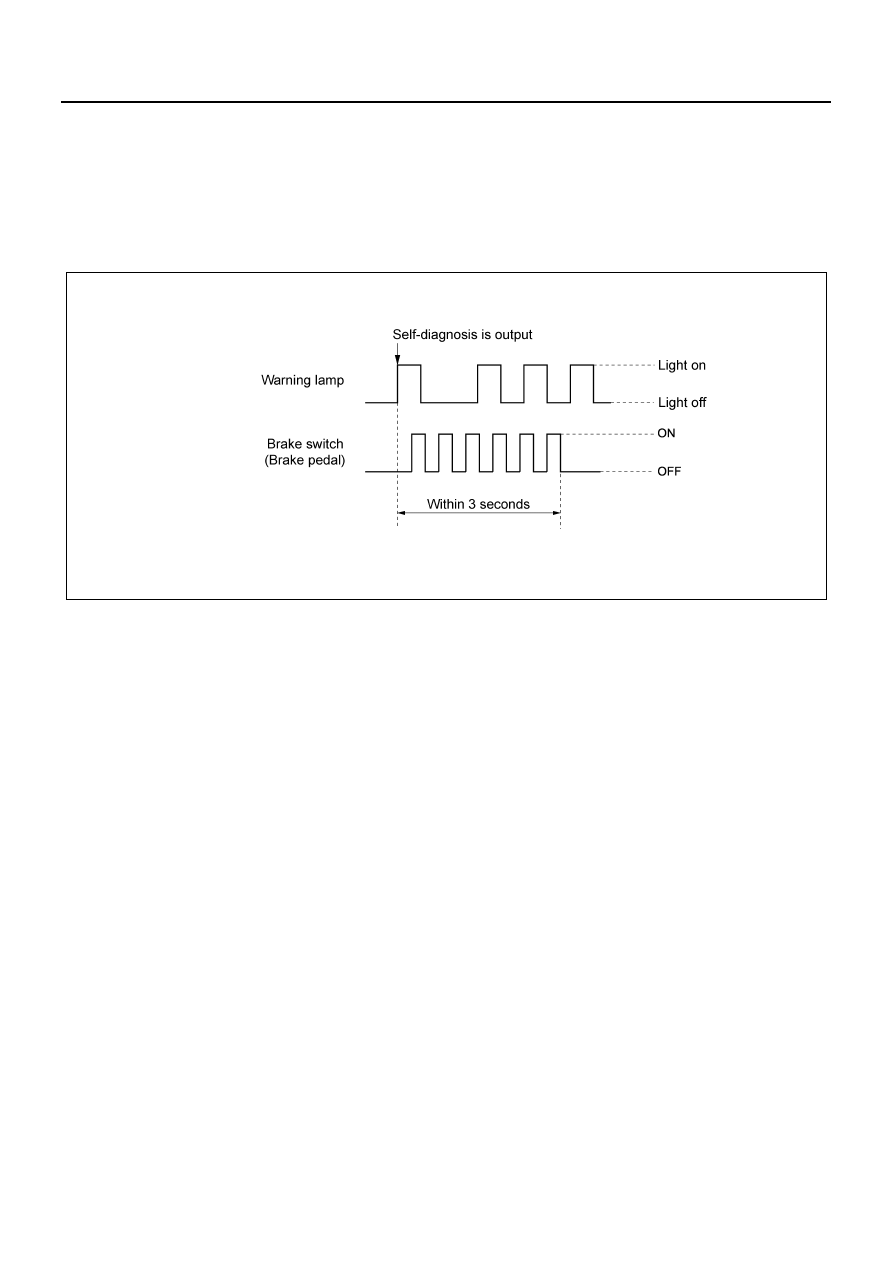Isuzu N-Series. Manual - part 261

5A4-18 ABS/ASR
How to Clear Diagnosis Trouble Code (DTC)
DTCs stored in the EHCU will not be erased automati-
cally upon repair. Clear the DTCs using either of the fol-
lowing procedure:
1. Input the brake switch ON/OFF signal for six times
within three seconds while self-diagnosis result is
being output.
2. Use Tech 2 to clear.
CAUTION:
• After performing the DTC clear procedure, ensure
that it is cleared.
• If the step 1 does not work, perform with the step2.
Precautions During Diagnosis
At general baintenance
Adhere the following precautions when servicing and di-
agnosing of the ABS/ASR and other vehicle control sys-
tems.
• When performing electric-arc welding on the vehi-
cle, disconnect the EHCU connector before start-
ing welding work.
• Do not connect/disconnect the EHCU connector
when the starter switch is ON.
• The EHCU is a non-disassembled part. Do not
loosen the bolts and plugs of the EHCU.
• Be especially careful not to allow dirt, dust or me-
tallic powder to get into the hydraulic circuit during
checking and servicing the brake components.
• When only rear wheels are rotated using dram
tester or jack-upped for inspection, the ABS judges
it as sensor fault and illuminates the ABS warning
lamp. This indicates no fault in the system. Erase
the ABS diagnosis code after repair. Turn the start-
er switch to ON again, to make sure that the ABS
warning lamp does not come on.
When servicing computer system
Extreme care is required to avoid overcurrent to the
EHCU circuit. Do not ground to or apply voltage to the
EHCU without careful consideration while checking
open/short circuit. Use only the circuit tester having high
internal resistance or the special tool described in this
section to check those circuit. Do not connect/discon-
nect the power supply to the EHCU when the starter
switch is ON. Be sure to turn the starter switch to OFF
before disconnecting/connecting the battery cable, the
fuse, or the connector.
When replacing EHCU
The EHCU body fault rarely occurs, but more cases are
falsely identified as EHCU trouble, as it happened to be
corrected when replacing the EHCU but the fact is most-
ly secondary failure caused by the harness-side trouble
(such as short circuit) or undetectable cause due to in-
termittent trouble. Therefore, before replacing the EH-
CU, check if overcurrent is applied to the EHCU as well
as improper connection of the connectors.
Intermittent trouble
Intermittent troubles are mostly caused by temporally
disconnection of the harnesses and connectors. If a
trouble occurs, check the related circuit in the following
procedure.
1. Check for misconnection of the connector. Also
check for improper connection of the connector ter-
minal.
2. Check for deformation and damage of the terminal.
If deformed or damaged, correct and reconnect it
securely.
3. Simulated open circuit is also suspected. Check
the circuit by shaking the harness in a degree that
does not damage the harness.
Test run of vehicle with ABS problem
Trouble cause of the problem appeared as ABS warning
lamp illumination, can be identified with “Diagnostic pro-
cedure with illumination pattern”. However for the prob-
lem that can solely be identified by the driver as trouble
N5A2017E